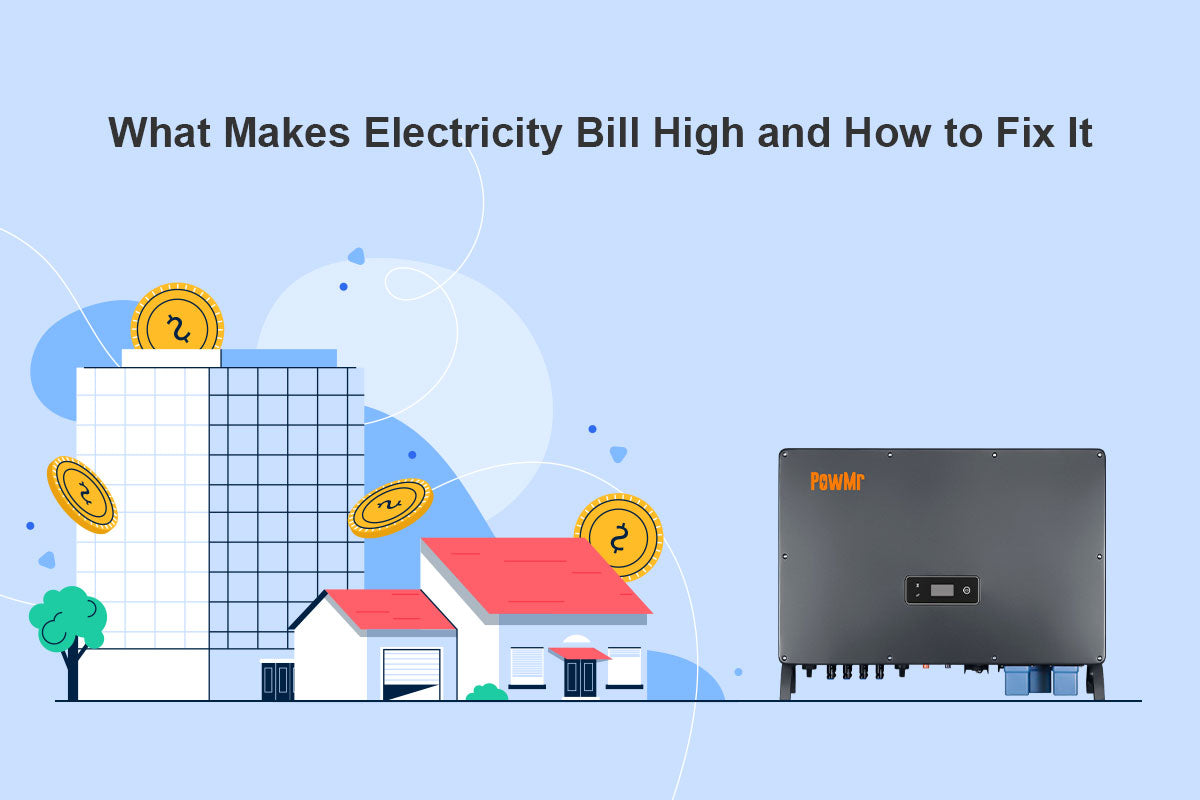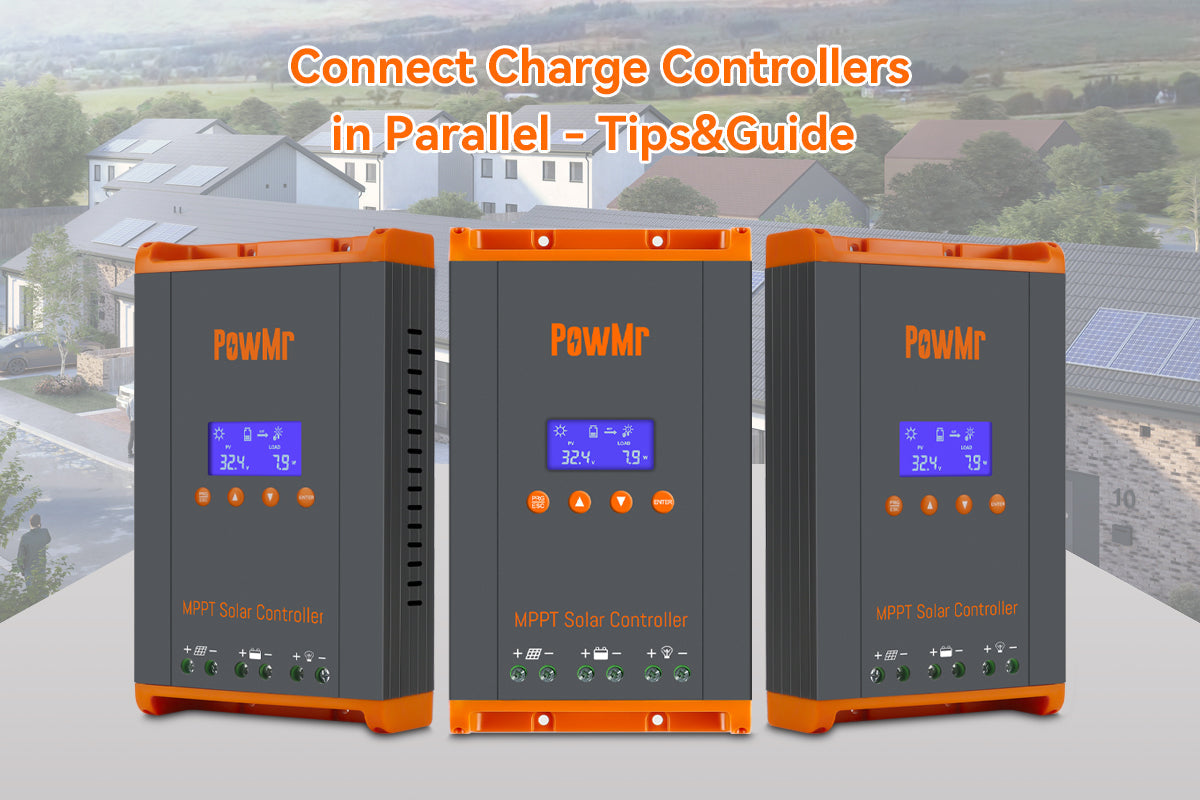"ตลาดพลังงานแสงอาทิตย์สำหรับที่อยู่อาศัยทั่วโลกคาดว่าจะมีมูลค่า 88.94 พันล้านดอลลาร์สหรัฐภายในสิ้นปี 2028 เพิ่มขึ้นจาก 15.24 พันล้านดอลลาร์สหรัฐในปี 2022 โดยมีอัตราการเติบโตเฉลี่ยต่อปี (CAGR) ปัจจุบันที่ 34.85% ตลอดช่วงเวลาที่คาดการณ์ไว้ 2023-2028" ตามที่ระบุโดย marketdataforecast.
การเพิ่มขึ้นนี้เกิดจากการนำโซลูชันการเก็บพลังงานด้วยแบตเตอรี่ในระบบพลังงานแสงอาทิตย์มาใช้มากขึ้น เจ้าของบ้านกำลังพิจารณาการติดตั้งแบตเตอรี่เพื่อเพิ่มความยืดหยุ่นและประสิทธิภาพด้านพลังงานมากขึ้น
ในบทความนี้ เราจะสำรวจ กระบวนการเพิ่มแบตเตอรี่ ให้กับการติดตั้งพลังงานแสงอาทิตย์ต่างๆ ตั้งแต่ ระบบนอกกริด และ ระบบรถบ้าน ไปจนถึง ระบบที่เชื่อมต่อกับกริด.
- ฉันสามารถเพิ่มแบตเตอรี่ให้กับระบบพลังงานแสงอาทิตย์ของฉันได้ไหม
- วิธีการเพิ่มแบตเตอรี่เพิ่มเติมให้กับระบบโซลาร์เซลล์ที่เชื่อมต่อกับกริด
- ทำไมต้องเพิ่มแบตเตอรี่ในระบบพลังงานแสงอาทิตย์
- ข้อต่อไฟฟ้ากระแสสลับ
- ข้อต่อ DC
- เปลี่ยนอินเวอร์เตอร์โซลาร์เซลล์ที่พร้อมใช้งาน
- วิธีการเพิ่มแบตเตอรี่ให้กับระบบพลังงานแสงอาทิตย์แบบออฟกริด
ฉันสามารถเพิ่มแบตเตอรี่ให้กับระบบพลังงานแสงอาทิตย์ของฉันได้ไหม?
ก่อนที่จะลงรายละเอียดเกี่ยวกับการเพิ่มแบตเตอรี่ในระบบพลังงานแสงอาทิตย์ต่างๆ สิ่งสำคัญคือต้องตอบคำถามที่อยู่ในใจของเจ้าของบ้านหลายคน: ฉันสามารถเพิ่มแบตเตอรี่ในระบบพลังงานแสงอาทิตย์ของฉันได้หรือไม่? คำตอบคือ ใช่ ในกรณีส่วนใหญ่ ไม่ว่าคุณจะมีระบบพลังงานแสงอาทิตย์แบบออฟกริด แบบเชื่อมต่อกับกริด หรือแบบ RV การเพิ่มการเก็บพลังงานด้วยแบตเตอรี่เป็นไปได้และสามารถปรับปรุงความยืดหยุ่นด้านพลังงานได้อย่างมาก.
วิธีเพิ่มแบตเตอรี่เพิ่มเติมในระบบโซลาร์กริดไท
ทำไมต้องเพิ่มแบตเตอรี่ในระบบพลังงานแสงอาทิตย์
คุณอาจพิจารณาเพิ่มแบตเตอรี่ให้กับระบบเชื่อมต่อกับกริดด้วยเหตุผลดังต่อไปนี้:
อิสระด้านพลังงาน
เพิ่มความเป็นอิสระจากกริด โดยเฉพาะในพื้นที่ที่มีการขัดข้องบ่อยครั้งหรือในกรณีที่ต้องการลดการพึ่งพากริด.
การประหยัดตามระยะเวลาการใช้งาน
ลดค่าไฟฟ้าโดย เก็บพลังงานแสงอาทิตย์ส่วนเกินในช่วงเวลาที่มีอัตราต่ำและใช้มันในช่วงเวลาที่มีอัตราสูง ซึ่งเป็นเรื่องที่พบได้ทั่วไปในพื้นที่ที่มีการตั้งราคาแบบตามเวลาใช้งาน.
การเพิ่มประสิทธิภาพการวัดมิเตอร์สุทธิ
เพิ่มประโยชน์จากการวัดมิเตอร์สุทธิสูงสุดโดยการเก็บพลังงานแสงอาทิตย์ส่วนเกินและส่งกลับไปยังกริดในช่วงเวลาที่มีความต้องการสูงสุด.
การเตรียมความพร้อมในกรณีฉุกเฉิน
ตรวจสอบให้แน่ใจว่าอุปกรณ์ที่สำคัญยังคงทำงานได้ในช่วงเหตุฉุกเฉิน เพื่อให้ความปลอดภัยและความพร้อม
ไม่ว่าจะด้วยเหตุผลใด คุณสามารถเลือกวิธีหลักสามวิธีในการรวมแบตเตอรี่ในระบบเชื่อมต่อกับกริด: การเชื่อมต่อ AC, การเชื่อมต่อ DC และการเปลี่ยนอินเวอร์เตอร์โซลาร์ที่พร้อมสำหรับการจัดเก็บ.
ข้อต่อไฟฟ้ากระแสสลับ
การเชื่อมต่อแบบ AC หมายถึงกระบวนการในการนำพลังงานไฟฟ้า DC จากแผงโซลาร์เซลล์ไปเก็บในแบตเตอรี่ DC ผ่านแผงสวิตช์ AC โดยการจับคู่กับอินเวอร์เตอร์เชื่อมกริดและเครื่องชาร์จอินเวอร์เตอร์แบบออฟกริดเพิ่มเติมเพื่อชาร์จแบตเตอรี่.
ข้อต่อ DC
การเชื่อมต่อแบบ DC ข้ามความจำเป็นในการใช้บัส AC ทำให้ พลังงาน DC จากแสงอาทิตย์สามารถชาร์จแบตเตอรี่ได้โดยตรง โดยทั่วไปแล้ว เพื่อจัดการการไหลของพลังงานจากแผงโซลาร์เซลล์ไปยังแบตเตอรี่ จะต้องมีตัวควบคุมการชาร์จเพิ่มเติม แผงจะเชื่อมต่อโดยตรงกับตัวควบคุมการชาร์จในรูปแบบ DC ซึ่งจะช่วยในการชาร์จแบตเตอรี่
อย่างไรก็ตาม วิธีการเชื่อมต่อแบบ DC และ AC ต่างมีข้อเสียของตนเอง ตัวอย่างเช่น อาจมี ปัญหาการสื่อสาร ระหว่างเครื่องชาร์จอินเวอร์เตอร์/ตัวควบคุมการชาร์จ, มิเตอร์พลังงาน และอินเวอร์เตอร์โซลาร์ที่มีอยู่ ปัญหาเหล่านี้เกิดขึ้นเมื่อกำหนดเวลาที่เหมาะสมสำหรับการชาร์จและการปล่อยพลังงานตามพลังงานโซลาร์ส่วนเกิน.
ดังนั้น หากอินเวอร์เตอร์ปัจจุบันของคุณ ใกล้จะหมดอายุการใช้งาน เราขอแนะนำให้คุณเปลี่ยนเป็นอินเวอร์เตอร์ไฮบริดแบบเชื่อมต่อกริด หรือโซลูชันการเชื่อมต่อ DC อื่น ๆ.
เปลี่ยนอินเวอร์เตอร์โซลาร์เซลล์ที่พร้อมใช้งาน
อินเวอร์เตอร์แบบไฮบริดเชื่อมต่อกริดรวมพอร์ตสำหรับการเชื่อมต่อ PV, แบตเตอรี่ และกริด ซึ่งช่วยให้ ควบคุมระบบพลังงานทั้งหมดได้อย่างครอบคลุม แม้ว่าจะมีค่าใช้จ่ายเริ่มต้นที่สูงกว่า แต่ก็สามารถจัดการการกระจายไฟฟ้าระหว่างกริด, การเก็บแบตเตอรี่ และโหลดได้อย่างมีประสิทธิภาพ โดยเพิ่มการประหยัดค่าใช้จ่ายในแผนอัตราค่าบริการที่แตกต่างกัน.
SOLXPOW เป็นอินเวอร์เตอร์เชื่อมต่อกับกริดที่ทันสมัยออกแบบมาเพื่อเพิ่มความสะดวกสบายและประสิทธิภาพในการจัดการพลังงาน มีการติดตั้งการวัดอัจฉริยะและความสามารถในการตรวจสอบโหลดตลอด 24 ชั่วโมง ทำให้สามารถควบคุมได้อย่างราบรื่น ผ่านการเข้าถึงคลาวด์จากทั้ง PC และอุปกรณ์มือถือ ฟีเจอร์ที่สามารถปรับแต่งได้ช่วยให้สามารถปรับตัวเข้ากับนโยบายอัตราค่าบริการที่หลากหลายและเพิ่มประสิทธิภาพการใช้พลังงาน:
- การจัดการเกณฑ์การบริโภคกริด
- โหมดการโกนหนวดแบบสูงสุด
- การสนับสนุนเอาต์พุตที่ไม่สมดุลสามเฟส
- การตรวจสอบและควบคุมระยะไกล
- โหมด UPS ภายใน 10 มิลลิวินาที
- ข้อจำกัดการส่งออกพลังงานกริด
วิธีการเพิ่มแบตเตอรี่ให้กับระบบพลังงานแสงอาทิตย์แบบออฟกริด
การเพิ่มแบตเตอรี่เพิ่มเติมได้กลายเป็นหนึ่งในด้านที่สำคัญในการเพิ่มประสิทธิภาพและความเชื่อถือได้ของระบบพลังงานแสงอาทิตย์ที่ไม่เชื่อมต่อกับกริด.
ในส่วนนี้ เราจะสำรวจ สองสถานการณ์: การเพิ่มแบตเตอรี่เพิ่มเติมสำหรับ ระบบพลังงานแสงอาทิตย์ที่บ้าน และการรวมแบตเตอรี่เข้ากับ ระบบพลังงานแสงอาทิตย์ DC to DC สำหรับ RV เราจะพูดคุยเกี่ยวกับเหตุผลในการเลือกแต่ละตัวเลือกและให้คำแนะนำการติดตั้งแบบทีละขั้นตอนสำหรับทั้งสองสถานการณ์.
เพิ่มแบตเตอรี่เพิ่มเติมสำหรับระบบพลังงานแสงอาทิตย์ที่บ้าน
นี่คือสถานการณ์ที่การเพิ่มแบตเตอรี่ในระบบนอกกริดสามารถเป็นประโยชน์อย่างมาก
ขยายความจุการจัดเก็บพลังงาน
เพิ่มแบตเตอรี่เพิ่มเติมในระบบพลังงานแสงอาทิตย์ของคุณเพื่อเพิ่มการเก็บพลังงาน เก็บพลังงานแสงอาทิตย์ส่วนเกิน สำหรับการใช้งานในภายหลังในช่วงที่ผลิตน้อยหรือในเวลากลางคืน เมื่อแผงโซลาร์เซลล์ขยายตัว การเก็บแบตเตอรี่จึงกลายเป็นสิ่งสำคัญสำหรับการจัดหาพลังงานที่เชื่อถือได้.
เครื่องสำรองไฟ
ในพื้นที่ที่มีแนวโน้มเกิด ไฟฟ้าดับ หรือพื้นที่ที่มี การเชื่อมต่อกริดที่ไม่สม่ำเสมอ การเพิ่มแบตเตอรี่ในระบบพลังงานแสงอาทิตย์ของคุณช่วยให้คุณสามารถเก็บพลังงานส่วนเกินได้ ทำให้มั่นใจได้ว่าคุณพร้อมสำหรับการเปลี่ยนแปลงสภาพภูมิอากาศที่ไม่สามารถคาดการณ์ได้และเหตุฉุกเฉินต่างๆ.
ขั้นตอนการเพิ่มแบตเตอรี่ในระบบพลังงานแสงอาทิตย์ที่บ้าน:
ขั้นตอนที่ 1. ประเมินความต้องการพลังงาน
กำหนดความต้องการพลังงานของครัวเรือนของคุณ นี่จะช่วยให้คุณ ประมาณจำนวนแบตเตอรี่ที่ต้องการ เพื่อเก็บพลังงานให้เพียงพอในการตอบสนองความต้องการของคุณในช่วงที่มีแสงแดดน้อย.
ขั้นตอนที่ 2. เลือก ประเภทแบตเตอรี่โซลาร์เซลล์
ตรวจสอบให้แน่ใจว่าแบตเตอรี่ใหม่ ตรงตามข้อกำหนด ของแบตเตอรี่ที่มีอยู่ในแบตเตอรี่แบงค์ ซึ่งรวมถึงพารามิเตอร์ต่างๆ เช่น ความจุของแบตเตอรี่ แรงดันไฟฟ้า และเคมี
การชาร์จและการปล่อยประจุอย่างสม่ำเสมอช่วยป้องกันการสึกหรอที่ไม่สม่ำเสมอและยืดอายุการใช้งานของแบตเตอรี่ นอกจากนี้ แบตเตอรี่ที่มีความสม่ำเสมอยังช่วยเพิ่มประสิทธิภาพของระบบและทำให้การบำรุงรักษาและการตรวจสอบง่ายขึ้น แบตเตอรี่ที่หลากหลาย อาจนำไปสู่ ความไม่สมดุล, อันตรายที่อาจเกิดขึ้น เช่น การร้อนเกินไป การระเบิด หรือไฟไหม้ และความไม่ประสิทธิภาพโดยรวมของระบบ.
การเลือกแบตเตอรี่ที่ตรงกันจะสร้างการติดตั้งพลังงานแสงอาทิตย์ที่เชื่อถือได้ มีประสิทธิภาพ และปลอดภัย ลดค่าใช้จ่ายและความเสี่ยง
ขั้นตอนที่ 3. เชื่อมต่อแบตเตอรี่แบบขนาน
การเชื่อมต่อแบตเตอรี่ แบบขนาน อย่างถูกต้องเพื่อเพิ่มความจุในการเก็บพลังงาน การเชื่อมต่อแบบขนานจะเกี่ยวข้องกับการเชื่อมต่อ ขั้วบวก ของแบตเตอรี่ทั้งหมด เข้าด้วยกัน และการเชื่อมต่อ ขั้วลบเข้าด้วยกัน การตั้งค่านี้จะทำให้แรงดันไฟฟ้ายังคงเท่าเดิมในขณะที่ความจุรวมเพิ่มขึ้น.
บันทึก:
ขึ้นอยู่กับแรงดันไฟฟ้าของระบบและการตั้งค่าของแบตเตอรี่ คุณอาจ เชื่อมต่อแบตเตอรี่ใหม่ใน อนุกรมหรือขนาน.
การเชื่อมต่อแบบอนุกรม จะเพิ่ม แรงดันไฟฟ้า ของระบบ ในขณะที่ การเชื่อมต่อแบบขนาน จะเพิ่ม ความจุ สิ่งสำคัญคือการตรวจสอบให้แน่ใจว่า ข้อกำหนดและช่วงแรงดันไฟฟ้าที่กำหนด ของตัวควบคุม ครอบคลุมระบบ แบตเตอรี่ใหม่.
เพื่อเพิ่มประโยชน์สูงสุดจากการเพิ่มแบตเตอรี่ในระบบพลังงานแสงอาทิตย์ของคุณ ควรพิจารณาใช้ ตัวควบคุมการชาร์จแบตเตอรี่คู่ ตัวควบคุมขั้นสูงนี้ออกแบบมาเพื่อจัดการแบตเตอรี่สองก้อนอย่างมีประสิทธิภาพโดยอิสระ หลีกเลี่ยง ความไม่สมดุลและอันตรายที่อาจเกิดขึ้น จากการเชื่อมต่อแบตเตอรี่ประเภทต่างๆ ในแบบอนุกรมหรือขนาน.
หากคุณขาดประสบการณ์ในการทำงานด้านไฟฟ้าหรือไม่แน่ใจเกี่ยวกับการเชื่อมต่อคอนโทรลเลอร์ จำเป็นต้องขอความช่วยเหลือจากผู้เชี่ยวชาญเพื่อป้องกันปัญหาไฟฟ้าและรับประกันความปลอดภัย.
ขั้นตอนที่ 4. เลือกและติดตั้งตัวควบคุมการชาร์จ
เลือกตัวควบคุมการชาร์จที่เหมาะสมเพื่อควบคุมการชาร์จและการปล่อยประจุของแบตเตอรี่ ตัวควบคุมการชาร์จจะปกป้องแบตเตอรี่จากการชาร์จเกินและรับประกันการถ่ายโอนพลังงานที่มีประสิทธิภาพระหว่างแผงโซลาร์เซลล์และแบตเตอรี่.
พิจารณาปัจจัยต่างๆ เช่น ความจุของแผงและแรงดันไฟฟ้าของแบตเตอรี่/เคมี เลือกฟีเจอร์เช่น การติดตามจุดพลังงานสูงสุด (MPPT) เพื่อประสิทธิภาพที่ดีกว่า ปฏิบัติตามคำแนะนำของผู้ผลิตในการติดตั้ง การเชื่อมต่อแผงและแบตเตอรี่ให้ปลอดภัย.
เพิ่มแบตเตอรี่ให้กับระบบโซลาร์เซลล์ DC to DC สำหรับ RV
ในรถบ้าน ระบบโซลาร์เซลล์ DC ต่อ DC สามารถเป็นวิธีที่ยอดเยี่ยมในการใช้พลังงานแสงอาทิตย์และใช้มันอย่างมีประสิทธิภาพสำหรับความต้องการไฟฟ้าต่างๆ
การเพิ่มแบตเตอรี่ในชุดนี้จะช่วยเพิ่มความสามารถและทำให้คุณเพลิดเพลินกับพลังงานที่เชื่อถือได้มากขึ้นในระหว่างการเดินทาง นี่คือสถานการณ์ที่การเพิ่มแบตเตอรี่ในระบบพลังงานแสงอาทิตย์ของ RV สามารถเป็นประโยชน์:
การเดินทางนอกกริดที่ยาวนาน
หากคุณวางแผนที่จะใช้เวลา นอกกริดเป็นระยะเวลานาน การเพิ่มแบตเตอรี่ให้กับระบบพลังงานแสงอาทิตย์ใน RV ของคุณจะช่วยให้คุณเก็บพลังงานแสงอาทิตย์ส่วนเกินในระหว่างวันและใช้มันในตอนกลางคืนหรือเมื่อแสงแดดมีจำกัด.
พลังงานที่เพิ่มขึ้นสำหรับอุปกรณ์
การเพิ่มแบตเตอรี่ในระบบพลังงานแสงอาทิตย์ของ RV ของคุณช่วยให้คุณ สามารถจ่ายไฟให้กับอุปกรณ์และเครื่องใช้ต่างๆ ได้มากขึ้น แม้ในช่วงที่มีแสงแดดน้อย ซึ่งจะมีประโยชน์โดยเฉพาะเมื่อคุณมีอุปกรณ์ที่ใช้พลังงานมาก เช่น ตู้เย็น เครื่องปรับอากาศ หรืออุปกรณ์อิเล็กทรอนิกส์อื่นๆ ที่ต้องการพลังงานอย่างต่อเนื่อง.
การสำรองข้อมูลและความซ้ำซ้อน
การมีแบตเตอรี่ในระบบพลังงานแสงอาทิตย์ของรถบ้านของคุณ ทำหน้าที่เป็นแหล่งพลังงานสำรอง ในกรณีที่มีการเปลี่ยนแปลงสภาพอากาศที่ไม่คาดคิดหรือความผิดปกติของอุปกรณ์ มันให้ความน่าเชื่อถือเพิ่มเติมและทำให้คุณมั่นใจว่าจะไม่ถูกทิ้งให้ไม่มีพลังงานในสถานการณ์ที่สำคัญ.
ขั้นตอนการเพิ่มแบตเตอรี่ในระบบโซลาร์เซลล์ DC to DC สำหรับ RV:
ขั้นตอนที่ 1. กำหนดความจุของแบตเตอรี่
ประเมินความต้องการพลังงานของคุณ และกำหนดว่าคุณต้องการความจุการเก็บพลังงานเพิ่มเติมเท่าใด พิจารณาการใช้พลังงานรวมของอุปกรณ์และอิเล็กทรอนิกส์ใน RV ของคุณ จำนวนวันที่คุณวางแผนจะใช้ชีวิตนอกกริด และการผลิตพลังงานเฉลี่ยจากแผงโซลาร์เซลล์ที่คุณมีอยู่.
ขั้นตอนที่ 2. เลือกแบตเตอรี่ที่เหมาะสม
เลือกแบตเตอรี่ที่ เข้ากันได้กับระบบพลังงานแสงอาทิตย์ RV ที่มีอยู่ของคุณ ตรวจสอบให้แน่ใจว่ามีสเปคที่คล้ายกันในแง่ของแรงดันไฟฟ้า เคมี และความจุ เพื่อรักษาการตั้งค่าที่สมดุลและมีประสิทธิภาพ แบตเตอรี่ลิเธียมไอออน เป็นตัวเลือกที่ได้รับความนิยมสำหรับ RV เนื่องจากมีน้ำหนักเบา ความหนาแน่นพลังงานสูง และอายุการใช้งานที่ยาวนาน เมื่อเปรียบเทียบกับแบตเตอรี่ตะกั่ว-กรดแบบดั้งเดิม.
ขั้นตอนที่ 3. เชื่อมต่อแบตเตอรี่และตัวควบคุมการชาร์จพลังงานแสงอาทิตย์
ติดตั้งตัวควบคุมการชาร์จแบตเตอรี่ระหว่างแผงโซลาร์เซลล์และแบตเตอรี่เพื่อควบคุมกระบวนการชาร์จ เชื่อมต่อแบตเตอรี่ (+) กับตัวควบคุม (+) และ (-) กับ (-) ติดตั้งตัวควบคุมภายใน RV เชื่อมต่อแผงโซลาร์เซลล์กับตัวควบคุม ตรวจสอบการเชื่อมต่อ เปิดระบบ ตรวจสอบเป็นประจำ.
ขั้นตอนที่ 4. เชื่อมต่อแบตเตอรี่แบบขนาน
คล้ายกับระบบพลังงานแสงอาทิตย์ที่บ้าน ให้เชื่อมต่อแบตเตอรี่ แบบขนาน โดยการเชื่อมขั้วบวกเข้าด้วยกันและขั้วลบเข้าด้วยกัน การตั้งค่านี้จะช่วยให้ แรงดันไฟฟ้ายังคงคงที่ ในขณะที่ความจุการเก็บพลังงานรวมเพิ่มขึ้น.
คุณมีตัวเลือกในการเชื่อมต่อแบตเตอรี่ใหม่ แบบอนุกรมหรือแบบขนาน ขึ้นอยู่กับแรงดันไฟฟ้าของระบบและการตั้งค่าแบตเตอรี่ของคุณ.
ขั้นตอนที่ 5. พิจารณาใช้ตัวแยกแบตเตอรี่
เพื่อป้องกันไม่ให้ แบตเตอรี่สตาร์ท ของ RV ของคุณ หมด ขณะใช้ แบตเตอรี่เสริม ให้พิจารณาติดตั้งตัวแยกแบตเตอรี่หรือตัวควบคุมการชาร์จที่แยกระบบทั้งสองเมื่อเครื่องยนต์ปิด นี่จะช่วยให้แบตเตอรี่หลักของ RV ของคุณยังคงมีการชาร์จและพร้อมที่จะสตาร์ทเครื่องยนต์.
ทางเลือกที่เหนือกว่า:
เพื่อแก้ไขปัญหาของแบตเตอรี่สตาร์ทของ RV ที่หมดขณะใช้แบตเตอรี่เสริม ให้พิจารณาใช้ PowMr DC to DC MPPT Solar Charge Controller ตัวควบคุมที่หลากหลายนี้มีการตรวจจับอัจฉริยะและการออกแบบวงจร Buck-Boost ซึ่งให้ประโยชน์ดังต่อไปนี้:
- รองรับ ระบบแบตเตอรี่คู่ พร้อมพอร์ตเอาต์พุตสองพอร์ต
- การตั้งค่าลำดับความสำคัญในการชาร์จที่ปรับแต่งได้ ของแบตเตอรี่เริ่มต้นและแบตเตอรี่บริการพร้อมการตั้งค่าค่าความดันไฟฟ้าที่ปรับได้
- เปิดใช้งาน การชาร์จระหว่างแบตเตอรี่สตาร์ทและแบตเตอรี่บริการ ตามการตรวจจับแรงดันไฟฟ้าแบตเตอรี่ BVS
- ใช้พลังงานจาก เครื่องกำเนิดไฟฟ้าและแผงโซลาร์เซลล์ เพื่อให้ RV มีการชาร์จเต็มตลอดเวลา
- ขยายการผจญภัยนอกกริด ด้วยการจัดการพลังงานที่มีประสิทธิภาพ



